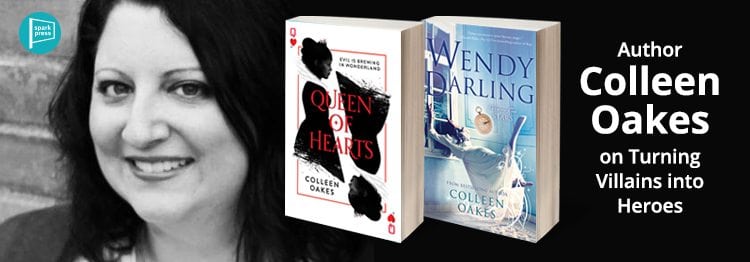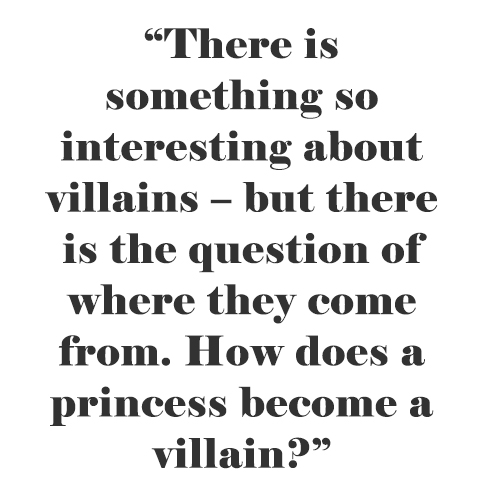August brings lots of things to SparkPoint Studio—the start of our Fall 2016 publishing season, and the highest temps of the year. But the most exciting thing might be our trailblazers theme for the August issue of The Spark, where we’re celebrating the people changing the game in publishing and book publicity.
SparkPress YA author Colleen Oakes is one of those pen-wielding pioneers, altering the way people view fantasy, character stereotype, and point of views. With her award-winning Queen of Hearts series, she flipped the point of view from the typical hero to the villain—in this case, the Queen of Hearts in Wonderland—successfully creating a connection between the reader and the villain. She did the same thing in her award-winning Wendy Darling series, which has the reader wondering who Wendy should trust: the maniacal, obsessive Peter Pan that we were taught to love as children, or the surprisingly thoughtful, protective Captain Hook.
But Oakes doesn’t just make us consider the other side as readers, she’s also created more awareness for female characters that weren’t necessarily the focus of an original story, creating complexities that are a huge draw for her readers.
Read on below to see why she finds villains so interesting, why she feels both male and female authors have always boxed in female characters, and the other trailblazers that have influenced her.
I love writing about villains. There is something so interesting about villains – perhaps it’s that they see the world in a completely different light that we do – as something to be conquered, a dog brought to heel – but there is the question of where they come from. How does a villain rise? This is the question that is explored in Queen of Hearts and the question that led me to write the book: How does a princess become a villain? Long before I wrote a word though, there were some amazing trailblazers that helped pave the way of the beautiful, complex villain point of view.
First off, Gregory Macquire, the author of Wicked, who was probably the first author to ever take on a villain and win. Wicked is a very adult book with dark themes and a very nuanced look at the Wicked Witch of the West and the social order of Oz that helped create her. Wicked, I feel, is probably the closest book that I can think of to Queen of Hearts, and that is something that makes me very proud.
The other influencer in this area that I would love to give a shout out to is C. S. Lewis, who didn’t necessarily give a villain a voice as much as he gave her teeth. Jadis, the White Witch from Narnia is a force to be reckoned with. She’s unapologetic. She’s cruel. She turns Mr. Tumnus to stone without a second thought and kills Aslan on a stone table with a knife as ghouls shriek around her—AND she looks fierce doing it. A female villain without apologies was a rare thing then and is even now. C. S. Lewis was a trailblazer in every way possible – as an apologist, as an author and as an observer of human nature – and a great villain rose out of his amazing brain.
Lewis’s and Macquire’s writing styles make it apparent that female villains, and female characters in general, take the story to another level when they’re given all sorts of complexities.
Personally, I love writing about real females. In YA we sometimes tend to see perfected female characters – superhuman females who are not only the girl next door, but perfectly beautiful, smart, capable, literature-quoting-from-memory manic pixie dream girls and their flaw is something like…clumsiness. For too long female characters were boxed in by either female writers writing the best versions of themselves or male writers writing out their fantasies, and it has trickled down through generations of books. I am so proud and glad to be part of a generation of writers that is breaking those molds, freeing female characters to be more multi-faceted.
For both Queen of Hearts and Wendy Darling, I wanted to pick female characters who weren’t the focus of their origin stories. One was a villain and the other was like a pretty side dish.
For Wendy Darling especially, she is shoved to the outer fringes of her own story so that Peter can be the star. I wanted to explore that; Peter Pan starts and ends with Wendy Darling’s involvement, and yet she is cast in a very narrow, rigid story line that is very defined by her gender and her societal norms.
I wanted to see what that girl would be like if she was taken out of those cages and let free in the feral wilds of Neverland. Would she stay who she was with her parents, or would she become someone else entirely?
I also love to see female characters do bad things, make wrong decisions and pay devastating consequences for those actions. Part of creating a nuanced and complex character is loving your character enough to encourage their growth, and hating them enough to let them hit a few walls. Female characters deserve to have their feet held to the fire just as much as any male characters.
On that note, a current trailblazer that I love following right now is Pierce Brown. His characters in Red Rising – mostly, Darrow, his main character – are a great study in exponential character growth and how to have a protagonist who is both a monster and a hero. This is something that I strove for with Dinah (the lead in Queen of Hearts) – how can I make her wicked and good? How can she be both villain and hero? I truly hope that readers are satisfied with the answers I’ve come up with.




Leave A Comment